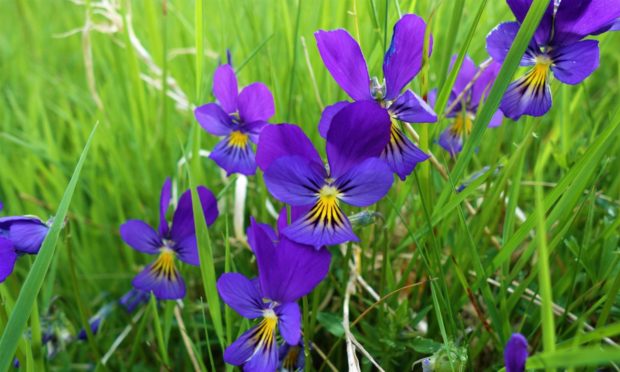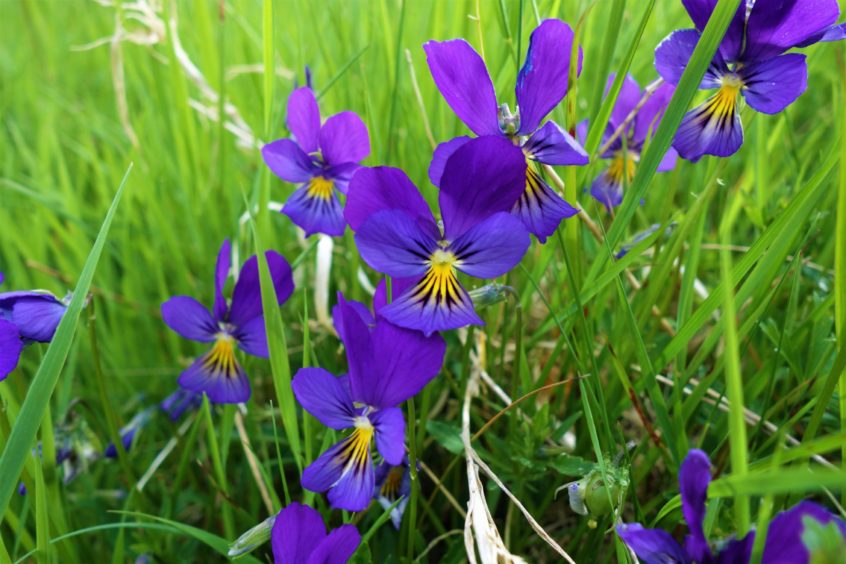The sweet cascading song of a willow warbler drifted across the breeze, accompanied by the altogether scratchier music of a whitethroat, which was singing from a secluded perch deep within a hawthorn.
Around me on this Ochils hillside in southern Perthshire was a broad sweep of young native trees, including birch, alder, oak, bird cherry, hazel and rowan. It was a wonderful panorama, so full of life and natural vibrancy that my heart sang with joy.
As I wandered along a track that wound its way to the top of Ben Shee, there was an abundance of wildflowers including tormentil, bird’s-foot trefoil, and germander speedwell, amongst which bees buzzed and butterflies fluttered.
It was a place full of natural diversity, yet only a couple of decades ago this part of Glen Devon that straddles the Ochil Hills was heavily grazed sheep pasture.
Ambitious project
Since then, a remarkable transformation has taken place though an ambitious project managed by Woodland Trust Scotland that has seen over 1.5 million native trees planted in an exciting initiative to create a forest that mirrors the landscape found in historical times.
The result is a mosaic landscape of natural woodland and clearings that benefits biodiversity and enhances people’s enjoyment of the landscape.
A drift of mountain pansies caught my eye. They are among our most stunning wildflowers, little purple gems of perfection, with their two large top petals looking somewhat akin to rabbit ears.
In the centre of the flower is a glowing heart of sunshine, gently inscribed with darker lines, which are honey guides to help lure insects into the centre of the bloom.
Most mountain pansies in the Ochils are purple, although a few yellow ones occur, which is the predominate colour in other parts of their UK range.
Wild pansies often show great variation and different species may hybridise with each other, which is one reason why they are such a great favourite among horticulturalists.
Bumblebee
A small bumblebee buzzed around the dazzling yellow flower of a nearby bird’s-foot trefoil, its orange furry rear-end catching the sunshine.
It was a blaeberry bumblebee, a scarce species that haunts our hillsides.
They are real sun-lovers – as soon as the sun is out, they appear as if from nowhere, and should a dark cloud scuttle by, they vanish just as quick.
From the top of Ben Shee, I descended towards Lower Glendevon Reservoir, where small heath butterflies flitted low over the tangled grass.
They are miniscule, tawny-coloured butterflies with subtle flashes of orange on their wings.
Then, a much larger butterfly swept past me on powerful wings – a dark green fritillary, which are always frustrating to watch as they are loathe to settle and are continually on the move.
Everywhere I looked, there was something new to see, and with a spring in my step, I continued down to the reservoir, my mind totally absorbed by the bountiful nature all around.
INFO
The Ochils are a great place for spotting wildlife. Ospreys can be seen hunting over the reservoirs, and typical hill birds such as whinchats, meadow pipits and wheatears also occur.











